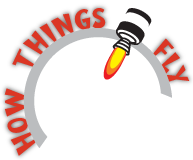Ask an Explainer
Q:
How does a bird slow down?
A:
With planes and birds alike, there is one way to land safely: decrease lift and increase drag. A bird will stop flapping its wings (decreasing thrust, and thus lift) and angle its wings just so as to create enough drag to slow down. It then delicately uses its wings to guide itself where it wants to land.

Posted on November 15, 2015 at 2:26 pm
Categories:
